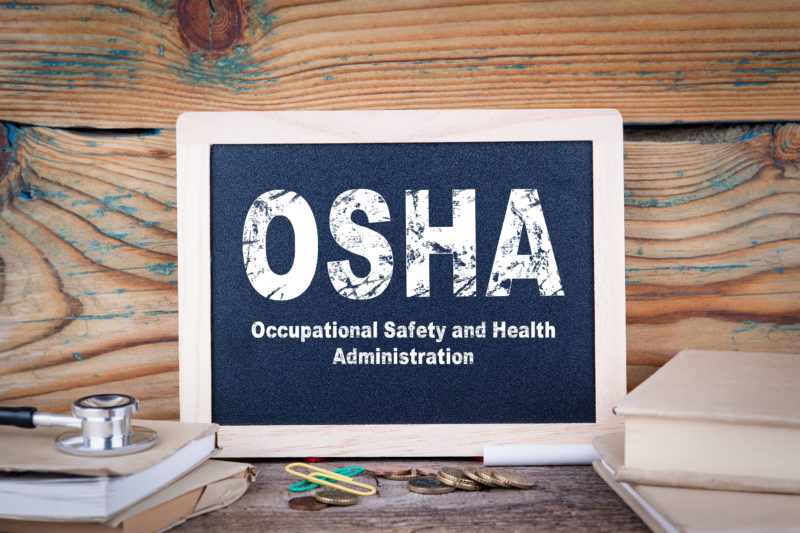Most employers are familiar with Cal/OSHA citations and penalties. Cal/OSHA has been increasing the penalties. The new penalty for a regulatory violation is $13,047 maximum per violation. The new general violation penalty is $13,047 maximum per violation. Serious violations can now result in a penalty of $25,000 maximum per violation. Finally, the penalty for willful and repeat violations is now $130,464 per violation.
While the maximum penalties have increased substantially over the past few years, the cost of a violation can include far more than the penalty issued by Cal/ OSHA. A Cal/OSHA citation can also increase an employer’s exposure to workers’ compensation claims.
Workers’ compensation claims
An employer’s workers’ compensation insurance carrier is generally obligated to furnish medical care, wage replacement benefits, vocational rehabilitation, and death benefits to employees who sustain an industrial injury.
However, if an employee’s injury is caused by the serious and willful misconduct of the employer, the employee is entitled to a supplemental award, similar to punitive damages in a tort action. The employer, rather than the insurer, is liable for this penalty payment since California prohibits insurance from covering liability for serious and willful misconduct (Cal. Ins. Code § 11661).
Serious and willful misconduct
Serious and willful misconduct as defined by Labor Code Section 4553 is an act done “deliberately for the express purpose of injuring another or intentionally performed whether with the knowledge that serious injury is a probable result or with a positive, active, wanton, reckless and absolute disregard of its possibly damaging consequences.” Ferguson v. Workers’ Comp. Appeals Bd., 33 Cal. App. 4th 1613, 1622 (1995).
“Willful misconduct” means something more than negligence, however gross. Johns-Manville Sales Corp. v. Workers’ Comp. Appeals Bd., 96 Cal. App. 3d 923, 931 (1979).
“Serious and willful misconduct” is described as something that is “much more than mere negligence, or even gross or culpable negligence” and as involving “conduct of a quasi-criminal nature, the intentional doing of something either with the knowledge that it’s likely to result in serious injury, or with a wanton and reckless disregard of its possible consequences.” Id. at 931-932. The mere failure to perform a statutory duty is not, alone, willful misconduct. It amounts only to simple negligence. Id. at 932.
To prove the employer is guilty of serious and willful misconduct, the employee must show the employer (1) knew of the dangerous condition, (2) knew the probable consequence of its continuance would involve serious injury to the employee and (3) deliberately failed to take corrective action. Johns-Manville Sales Corp. v. Workers’ Comp. Appeals Bd., 96 Cal. App. 3d at 933.
Violation of safety order
An employer may also be found to have engaged in serious and willful misconduct if the employer violated a safety order promulgated by the Department of Industrial Relations. Cal. Lab. Code § 4553.1.
Under Labor Code Section 4553.1, the Appeals Board must find
- the specific manner in which the safety order was violated
- the violation of the safety order proximately caused the injury and the specific manner in which the violation constituted the proximate cause
- the safety order, and the conditions making the safety order applicable, were known to, and violated by, a particular named person, either the employer or a representative, or that the condition making the safety order applicable was obvious and created a probability of serious injury, and that the failure of the employer or a representative to correct the condition constituted a reckless disregard for the probable consequences.
A decision from a Cal/OSHA administrative law judge is not necessarily binding on the Workers’ Compensation Appeals Board regarding whether the employer engaged in serious and willful misconduct. See Bosell v. Workers’ Compensation Appeals Board, 67 Cal. Workers’ Comp. C. 447 (2002) (writ denied); Eastwood v. Cooper Construction, 2015 Cal. Wrk. Comp. P.D. LEXIS 587.
While not binding, it’s likely that any judge hearing a worker’s compensation case involving a serious and willful claim will be influenced by any finding in a Cal/ OSHA proceeding.
Penalty for serious and willful misconduct
If an employee is injured as a result of serious and willful misconduct by an employer, he or she is entitled to a 50-percent increase in the amount of compensation otherwise recoverable, together with costs and expenses not to exceed $250 (Cal. Lab. Code § 4553). The 50-percent increase is to be calculated based on the entire award, not just on compensation indemnity. See Ferguson v. Workers’ Comp. Appeals Bd., 33 Cal. App. 4th 1613 (1995).
“[A]n award for increased compensation due to serious and willful misconduct of an employer under section 4553 must be calculated with reference to every benefit or payment … includ[ing] medical treatment payments, medical-legal fees, and vocational rehabilitation costs, as well as all indemnity benefit payments.” Id. at 621 (emphasis added). While the cost of having an effective safety program can be expensive, the cost of not having an effective safety program can be even more so as these citations can affect the ability to bid on some jobs and have a direct impact on workers’ compensation premiums.
SCCA’s Safety Committee meets monthly, which provides an excellent forum in which to share ideas and discuss job site safety. All SCCA members are encouraged to join and participate in the Safety Committee as we help to improve worker safety and watch the bottom line at the same time.


